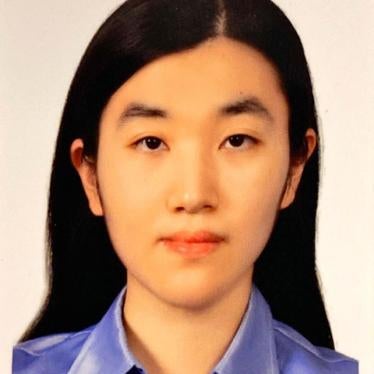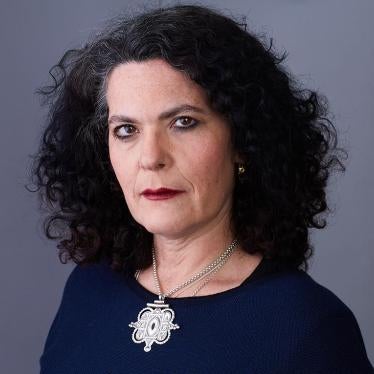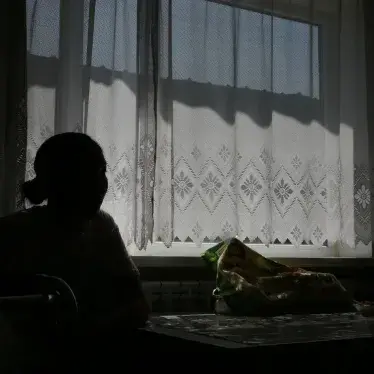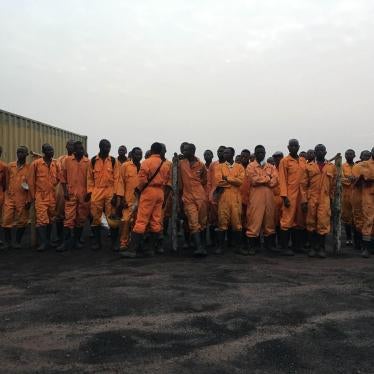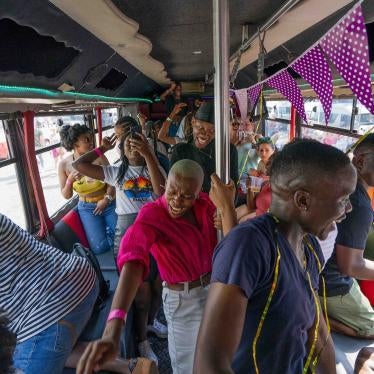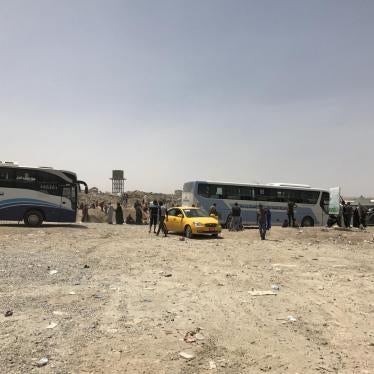Romania has a deeply disturbing history of interfering with women’s reproductive rights. Behind the Iron Curtain, abortion as well as birth control was deeply restricted from 1966 until the government fell – with the USSR – in 1989. During this time, roughly 10,000 women and girls died after they were forced to resort to unsafe abortion; some experts believe the real figure is much higher.
Today, on paper at least, abortion in Romania is legal until the 14th week of pregnancy and in certain other cases. But in reality, it’s shockingly and increasingly hard for women to access health care services to end unwanted pregnancies. While government officials pay lip service to protecting women’s rights, behind the scenes they are often doing whatever they can to make abortion inaccessible, including partnering with “crisis pregnancy centers” that pressure women and girls to continue pregnancies, often through deceptive and other abusive means. A new Human Rights Watch report, “It’s Happening Even Without You Noticing”, documents this alarming trend. Human Rights Watch’s former researcher Song Ah speaks with Romanian midwife and activist Irina Mateescu about her work to defend the sexual and reproductive health rights of women and girls.
What is happening in Romania around sexual and reproductive health and abortion?
What the law says on paper and what happens in reality are very different things. On paper, the right to “abortion on demand” is protected up to 14 weeks, and abortion for medical reasons is legal up to 24 weeks. In practice, though, it is getting harder and harder for women and girls to access abortion. Very few healthcare facilities actually provide abortion care. This is especially true for government facilities. In fact, public hospitals often push people to private medical services, where abortions are totally unaffordable for many women and girls.
Doctors willing to offer abortion care are often prohibited from doing so by their hospital administrators. Additionally, doctors who oppose abortion invoke “conscientious objection” – a refusal to provide certain non-emergency medical services on religious or moral grounds – denying services without connecting patients to another healthcare provider.
Alarmingly, some government officials, including hospitals, actively work with so-called crisis pregnancy centers, including handing over information about patients. Although the centers present themselves as healthcare clinics, they push anti-choice narratives and medical misinformation along with their services, often misleading those seeking help. All of these issues particularly affect girls, as well as women and girls living in rural areas who face additional barriers to abortion.
There is a lack of policies regarding women’s health. We have worked hard with the government on developing a new strategy on reproductive health and we want it to be adopted and implemented. We need action. After the communist times we had sexuality education, family planning, and abortion access. Contraception was free. All of this has gone backwards in the last 15 years.
How did you get involved in this work?
I am a licensed midwife and worked for 14 years in Romania. Now I live in Brussels and am the president of the Romanian Association of Midwives. We pressure Romania’s government and Parliament to improve what is happening there.
In 2024, I worked with another midwife’s association, and we did a report on abortion access. We contacted every public and private clinic and hospital offering ob/gyn services and the results were incredible. Around 14 percent of facilities do medication abortion, surgical abortion, or both, but very few offer abortion up to the legal limit of 14 weeks or medication abortion up to 9 weeks – only 4 percent of public health facilities.
We also did a report on obstetric violence – abuse of pregnant people seeking sexual and reproductive health services and information – documenting C-sections women didn’t want, babies taken from them after birth, and the lack of prenatal care. The issue in Romania is not just abortion care. Anytime a woman comes for health services there are huge barriers.
But what inspired you to become an activist?
I had an abortion at 18. It was very difficult to get. I went to a crisis pregnancy center for a free pregnancy test, and they showed me the Silent Scream movie [a 1984 anti-abortion film]. They called me daily at my grandma’s house. I managed to get an abortion but couldn't get rid of the people from the crisis pregnancy center. They harassed me a lot.
When I gave birth to my first child, again it was so abusive. The childbirth, lack of free and accessible care in pregnancy and after, problems with breastfeeding. Everything was a struggle. I felt so scared when I became pregnant with my second daughter. “Oh my god, I have to go through this again,” I thought. I became a midwife because I needed to do something with my anger.
Are there cases you couldn't stop thinking about?
For me, it was a woman who called saying: “I need to be out. My partner is aggressive, and I am also pregnant, and I want an abortion.” We sent her to a private clinic, and the doctor referred her to a crisis pregnancy center, because she was 16 weeks along – too late for a abortion other than on medical grounds [in Romania]. The doctor told her the pregnancy center will help with money, the baby, everything. She went to meet the crisis pregnancy center, where they said she will be punished if she has an abortion. She's a religious person, and they said she will do God’s will by having the baby. We offered to find her other options, maybe take her abroad for an abortion, because it was clear that she didn’t want the pregnancy – she was saying this all the time.
After she gave birth, she threw herself out a window. She signed the baby over to social protection then committed suicide. This was two years ago. It's still very hard.
What happens when a woman goes to a public hospital for an abortion?
Public hospitals charge for abortions. They’re only free when done for medical reasons before 12 weeks, and even then, it depends on the goodwill of the hospital. Rape is not considered a medical reason. Even if a mother has medical problems or the fetus will not survive, that’s not always considered a medical reason.
When someone high up in the hospital forbids abortion care because of personal beliefs, the doctors working at the hospital are not allowed to perform abortions. In these cases, the only options might be expensive private ones, and sometimes not even private options are available [nearby].
How common is it that managers prevent doctors at government hospitals from offering abortion?
At least one-third of public hospitals are like this. Some managers are proud of this. In one public hospital you can see wax embryos and posters from the church everywhere to scare you not to have an abortion.
In several counties, hospitals refer patients to crisis pregnancy centers. Women say, someone spoke with me and said I will die from abortion. They said the crisis pregnancy center has data from the hospital about them or even that people from the crisis pregnancy center were waiting for them outside of the hospital, because hospitals have informants inside. Sometimes hospitals work with priests from the churches inside hospitals.
Tell me about the role of crisis pregnancy centers in Romania?
They contact women that they know through hospitals are pregnant, or women and girls find them online because they have websites that look like they offer abortion care. Today, they work with professors, gynecologists, hospital leadership, county leadership, schools, political leaders. They have formal partnerships, big fundraising galas. They use more feminist-sounding discourse. They speak about saving women from men who want them to have an abortion.
We have women that changed their mind about having an abortion because of the fear instilled by crisis pregnancy centers. Even if we tell women, you will not die from this pill, that it's perfectly safe, these centers tell women they will die. The centers can say anything. It’s impossible to counter this argument, because they provide false information, and their objective is to create intense negative emotions. The centers have the phone number for the women, they know how many weeks they are, and they find a way to scare them.
What unique challenges are faced by girls needing abortions?
Under the law, 16 is the age that you can make autonomous decisions regarding sexual and reproductive health. But more than 90 percent of clinics providing abortion won’t provide care without a parent or guardian’s consent. Some clinics are not informed, but most said they don't want complications from someone complaining, like social services or the girls’ parents or partner.
Anesthesiologists don't provide anesthesia without parental consent until patients are 18. They don't consider an exception for sexual and reproductive health. So it's an impossible situation. For the teenagers we work with, it's medication abortion, not surgical, because of a lack of anesthesia.
And of course, sometimes it's abuse. If we speak about 13-year-old girls, that's rape. But the services to intervene are not working properly.
Have you faced harassment or threats because of your advocacy?
Online, yes. Lots of threats in my inbox. Being thrown out of groups, sometimes even for [discussing] contraception. What affects me most are legal threats linked to my abortion advocacy work.
Our members face backlash for our work – a lot of bullying and harassment in hospitals.
The refugee crisis from Ukraine was a moment of escalation. People said, why would you provide abortion for Ukrainian women? Their husbands are dying. You need to populate Ukraine.
What changes do you want to see in Romania regarding sexual and reproductive health rights?
I would love to see the new strategy adopted. We need to provide real access for comprehensive abortion care to teenagers and training on gender equality for doctors, midwives, and nurses through continuing medical education. Healthcare providers need to prescribe and offer free abortion pills, pregnancy tests, and contraception for patients that cannot pay.
Also, it's vital to include midwives in prescribing contraception and providing medication abortion, and provide reimbursement for out of hospital care. We have proven our value. We have saved thousands of women’s lives.
We need the government to acknowledge that sexual and reproductive health and rights are a vital part of women’s lives and to push for it. We have some good champions in the government.
